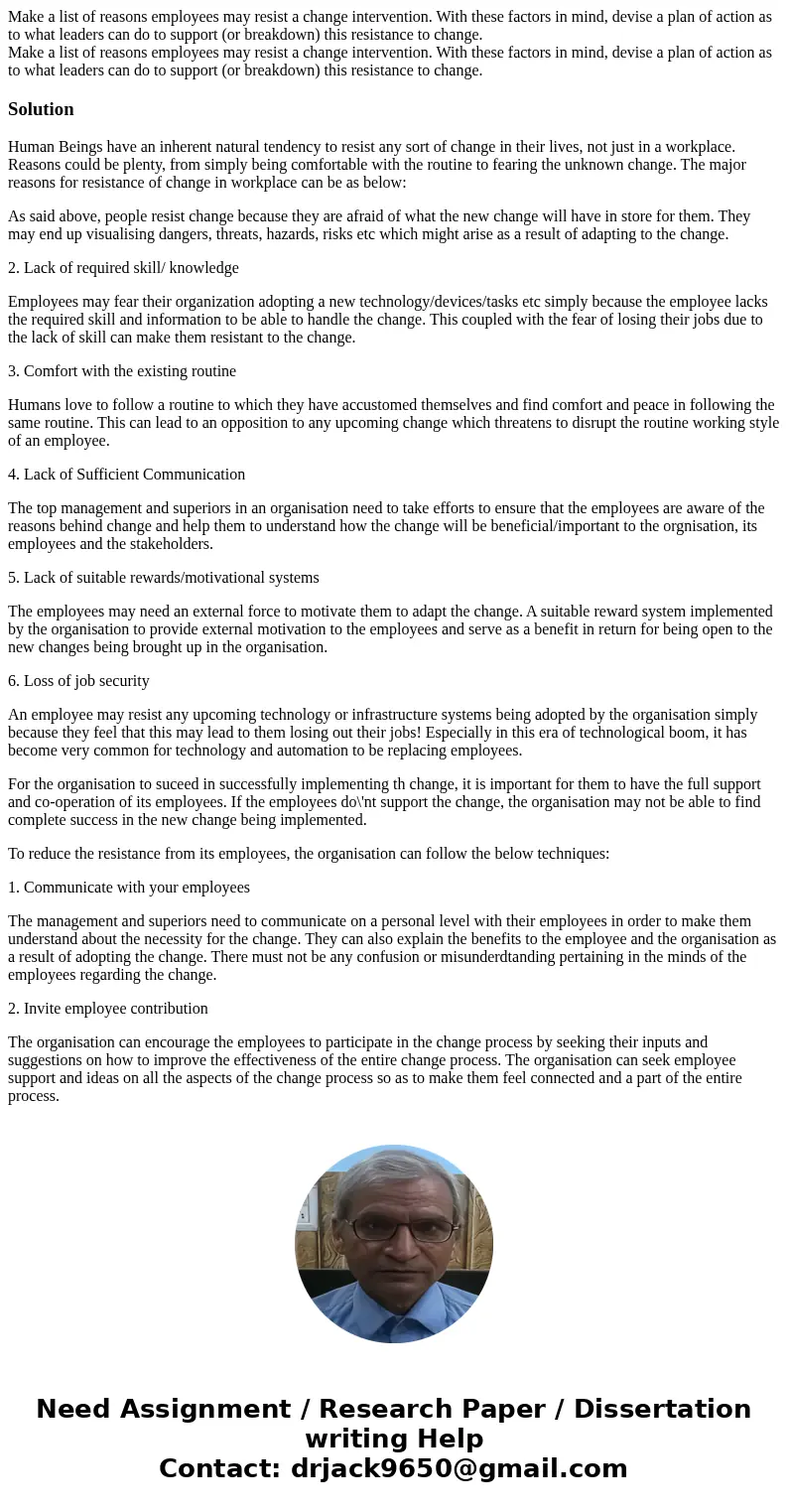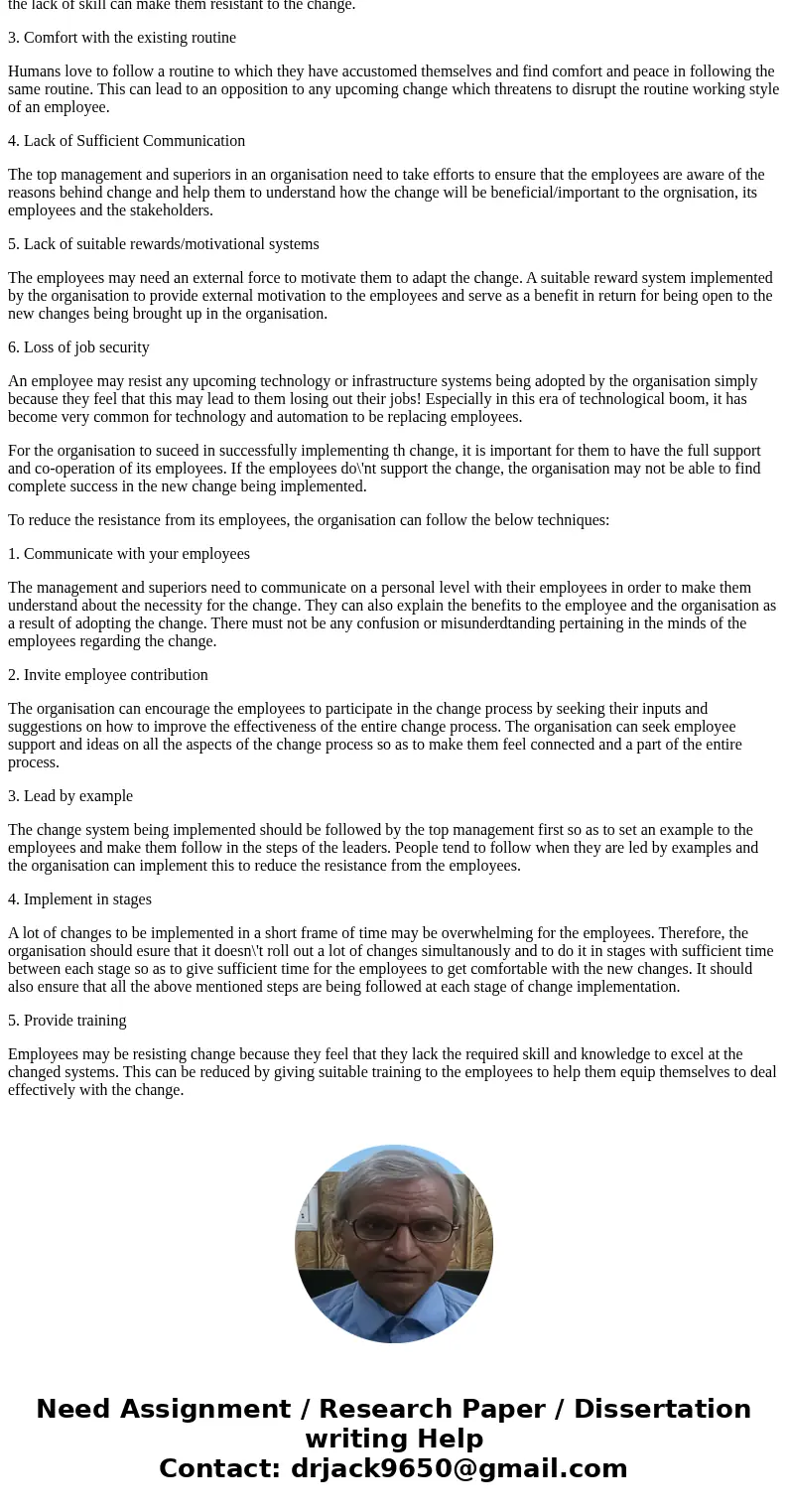Make a list of reasons employees may resist a change interve
Solution
Human Beings have an inherent natural tendency to resist any sort of change in their lives, not just in a workplace. Reasons could be plenty, from simply being comfortable with the routine to fearing the unknown change. The major reasons for resistance of change in workplace can be as below:
As said above, people resist change because they are afraid of what the new change will have in store for them. They may end up visualising dangers, threats, hazards, risks etc which might arise as a result of adapting to the change.
2. Lack of required skill/ knowledge
Employees may fear their organization adopting a new technology/devices/tasks etc simply because the employee lacks the required skill and information to be able to handle the change. This coupled with the fear of losing their jobs due to the lack of skill can make them resistant to the change.
3. Comfort with the existing routine
Humans love to follow a routine to which they have accustomed themselves and find comfort and peace in following the same routine. This can lead to an opposition to any upcoming change which threatens to disrupt the routine working style of an employee.
4. Lack of Sufficient Communication
The top management and superiors in an organisation need to take efforts to ensure that the employees are aware of the reasons behind change and help them to understand how the change will be beneficial/important to the orgnisation, its employees and the stakeholders.
5. Lack of suitable rewards/motivational systems
The employees may need an external force to motivate them to adapt the change. A suitable reward system implemented by the organisation to provide external motivation to the employees and serve as a benefit in return for being open to the new changes being brought up in the organisation.
6. Loss of job security
An employee may resist any upcoming technology or infrastructure systems being adopted by the organisation simply because they feel that this may lead to them losing out their jobs! Especially in this era of technological boom, it has become very common for technology and automation to be replacing employees.
For the organisation to suceed in successfully implementing th change, it is important for them to have the full support and co-operation of its employees. If the employees do\'nt support the change, the organisation may not be able to find complete success in the new change being implemented.
To reduce the resistance from its employees, the organisation can follow the below techniques:
1. Communicate with your employees
The management and superiors need to communicate on a personal level with their employees in order to make them understand about the necessity for the change. They can also explain the benefits to the employee and the organisation as a result of adopting the change. There must not be any confusion or misunderdtanding pertaining in the minds of the employees regarding the change.
2. Invite employee contribution
The organisation can encourage the employees to participate in the change process by seeking their inputs and suggestions on how to improve the effectiveness of the entire change process. The organisation can seek employee support and ideas on all the aspects of the change process so as to make them feel connected and a part of the entire process.
3. Lead by example
The change system being implemented should be followed by the top management first so as to set an example to the employees and make them follow in the steps of the leaders. People tend to follow when they are led by examples and the organisation can implement this to reduce the resistance from the employees.
4. Implement in stages
A lot of changes to be implemented in a short frame of time may be overwhelming for the employees. Therefore, the organisation should esure that it doesn\'t roll out a lot of changes simultanously and to do it in stages with sufficient time between each stage so as to give sufficient time for the employees to get comfortable with the new changes. It should also ensure that all the above mentioned steps are being followed at each stage of change implementation.
5. Provide training
Employees may be resisting change because they feel that they lack the required skill and knowledge to excel at the changed systems. This can be reduced by giving suitable training to the employees to help them equip themselves to deal effectively with the change.


 Homework Sourse
Homework Sourse